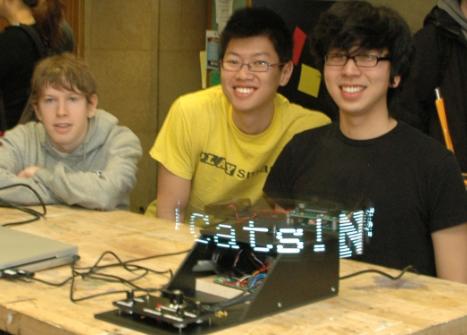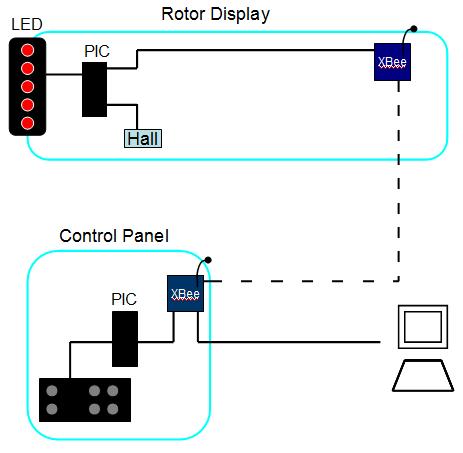Difference between revisions of "Persistence-of-Vision Display"
From Mech
Jump to navigationJump to search| Line 32: | Line 32: | ||
[[image:POVschematic|center]] |
[[image:POVschematic|center]] |
||
<br><br><br><br><br><br><br><br><br><br><br><br> |
<br><br><br><br><br><br><br><br><br><br><br><br> |
||
=== Circuit Diagram === |
=== Circuit Diagram === |
||
Revision as of 23:31, 16 March 2009
Team Members
- Gregory McGlynn(Computer Science, Class of 2011)
- Alexander Park (Material Science, Class of 2010)
- Kwang Xiong Sim (Mechanical Engineering, Class of 2010)
Overview
The purpose of this project was to create a display using the concept of Persistence of Vision. Essentially, we created a rotating platform that spins a column of LEDs. By controlling the frequency of blinking on each LED, and synchronizing it with the rate of rotation of the platform, we can tune the moving column of LEDs to display a desired image.
Theory of Persistence of Vision
Although arguably much more complex, human vision functions in a manner similar to modern motion pictures; our eyes retain images for a fraction of a second, not unlike a frame in a movie. This is called the persistence of vision (POV). When images change fast enough, what we see is a subtle blend of what we see now and a fraction of a second ago.
Mechanical Design
Primary Components
Base Box
Control Panel
Rotor Display
Electrical Design
Schematic

